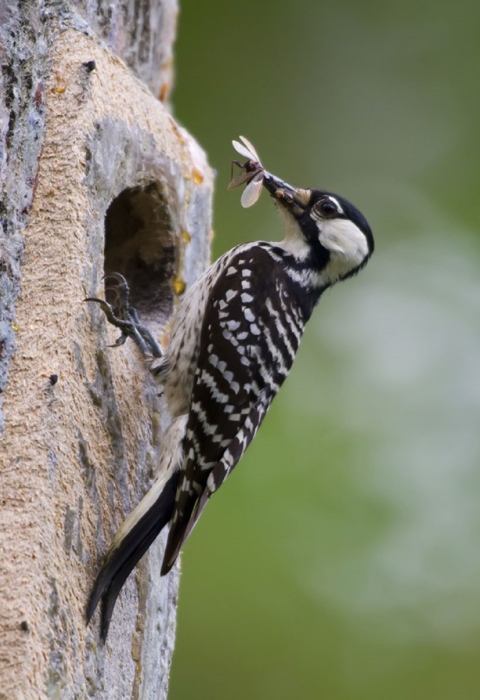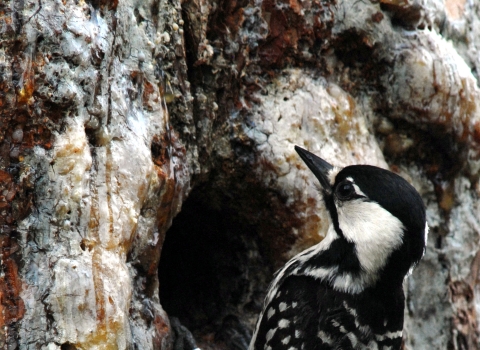What is the action the Service is announcing?
In October 2020, the U.S. Fish and Wildlife Service proposed to reclassify the red-cockaded woodpecker (RCW) from endangered to threatened, with a 4(d) rule, under the Endangered Species Act (ESA). Based on the information received during the initial public comment period, the Service is proposing a revised 4(d) rule for the RCW to address the public’s questions and concerns. The Service is reopening the comment period to allow all interested parties the opportunity to comment on the revisions to the 4(d) rule.
What does the proposed 4(d) rule provide for and how does it differ from the version that was published in October 2020?
This revised proposed 4(d) rule would adopt the same prohibitions that apply to an endangered species under Section 9 of the ESA. It would continue to prohibit take, among other standard activities (e.g., import/export). The prohibitions would apply throughout the species range, on both public and private lands, only if the species is reclassified as a threatened species.
In addition to these prohibitions, the Service is proposing several exceptions to allow for routine law enforcement activities, defense of life, and the assistance of sick or injured birds.
The revised proposed 4(d) rule would continue to except take associated with activities that are authorized by permits under the ESA, including those associated with Safe Harbor Agreements or Habitat Conservation Plans. It would also allow employees of State conservation agencies, operating under a cooperative agreement with the Service, to take red-cockaded woodpeckers in order to carry out conservation programs for the species.
Additionally, unlike the regulations that currently apply to the species under endangered status, the revised proposed 4(d) rule would provide species-specific exceptions to the standard take prohibitions in the rule. These species-specific exceptions would continue to facilitate and even increase beneficial management practices that provide for conservation of the RCW. This includes allowing incidental take on Department of Defense installations that occurs as a result of implementing habitat management and military training activities detailed in Service-approved Integrated Natural Resource Management Plans. It also includes allowing incidental take that results from habitat management activities that are intended to restore or maintain RCW habitat on Federal land management agency properties and that incorporate minimization measures that reduce effects on the species. We are also proposing an exception for take resulting from prescribed burns and the use of herbicides on private lands conducted as part of beneficial habitat management activities, as long as landowners follow best management practices and minimize adverse effects to known active clusters, to the maximum extent practicable. Finally, the proposed rule would except incidental take that occurs as a result of the installation of artificial cavities, as long as individuals conducting the installation have completed training, have achieved a certain level of proficiency, and are following appropriate guidelines.
How are federal agencies affected by the 4(d) rule?
Under section 7 of the Endangered Species Act, federal agencies must consult with the Service to ensure that any action they authorize, fund, permit or carry out does not jeopardize the existence of a listed species. This requirement does not change when a 4(d) rule is implemented; 4(d) rules, regardless of the take they prohibit or except, cannot change this requirement to consult. Additionally, even when a section 4(d) rule includes specific exceptions to take prohibitions, there is still an obligation that the Service must describe or enumerate the amount or extent of incidental take that is reasonably certain to occur (i.e., in an incidental take statement). The federal action agency consulting with the Service must monitor and report any such take that occurs so the Service can identify when reinitiation of consultation may be necessary and so the Service can keep track of the species’ status.
However, a section 4(d) rule can simplify the formal consultation process. At this time, the Service is working on tools to streamline formal consultation for activities that do not result in prohibited take of red-cockaded woodpeckers.
What is the current status of the RCW?
The RCW remains listed as an endangered species under the ESA.
If I’ve already commented, do I need to comment again?
If you have already commented on the proposal to reclassify the RCW, then you do not need to resubmit those comments. However, since changes have been made to the proposed 4(d) rule, interested parties are encouraged to review the rule and submit comments accordingly. Any final action resulting from this proposed rule will be based on the best scientific and commercial data. Please note that submissions merely stating support for, or opposition to, the action under consideration without providing supporting information, although noted, will not be considered in making a determination.
How do I comment?
For instructions on how to comment, go to the Federal eRulemaking Portal: www.regulations.gov. In the Search box, enter FWS-R-ES-2019-0018, which is the docket number for this rulemaking. We will accept comments received or postmarked on or before March 7, 2022.
FOR FURTHER INFORMATION CONTACT: Aaron Valenta, Chief, Division of Restoration and Recovery, U.S. Fish and Wildlife Service, Southeast Regional Office, 1875 Century Boulevard, Atlanta, GA 30345; telephone 404–679– 4144. Persons who use a telecommunications device for the deaf (TDD) may call the Federal Relay Service at 800–877–8339.
Press release
Read the press release that accompanies these frequently asked questions.




